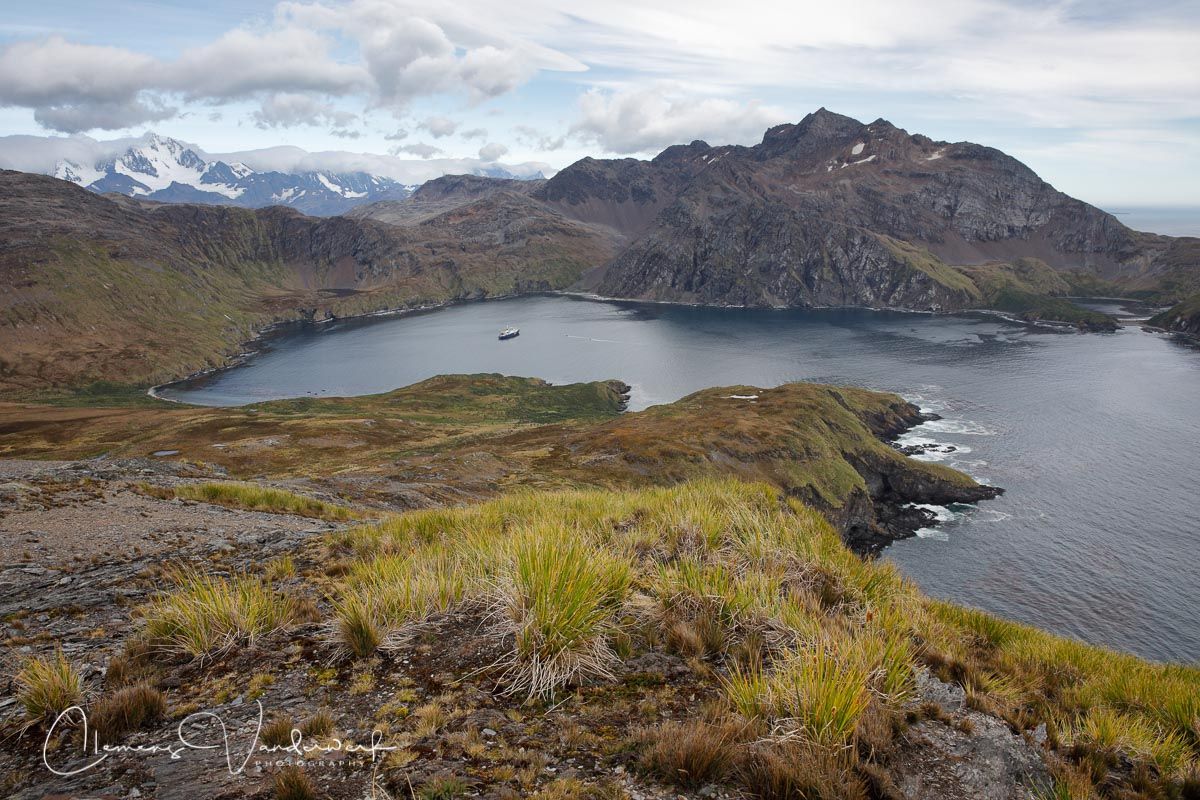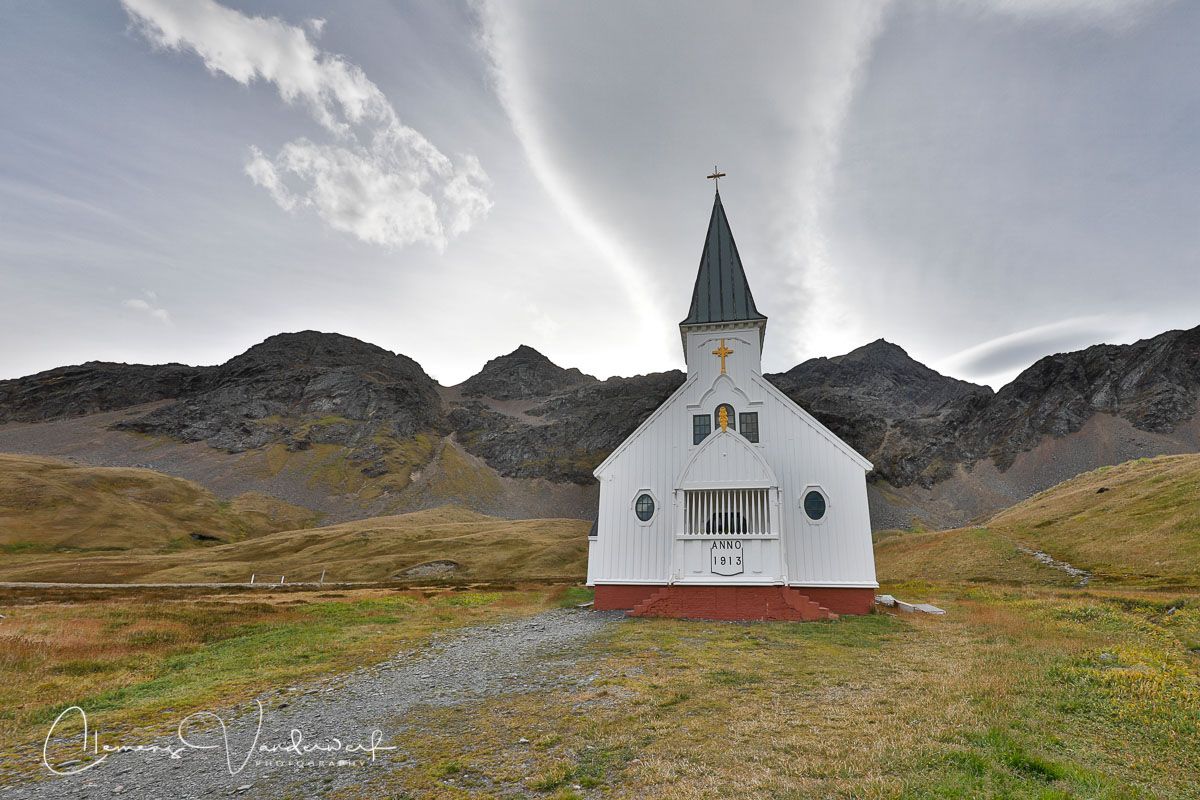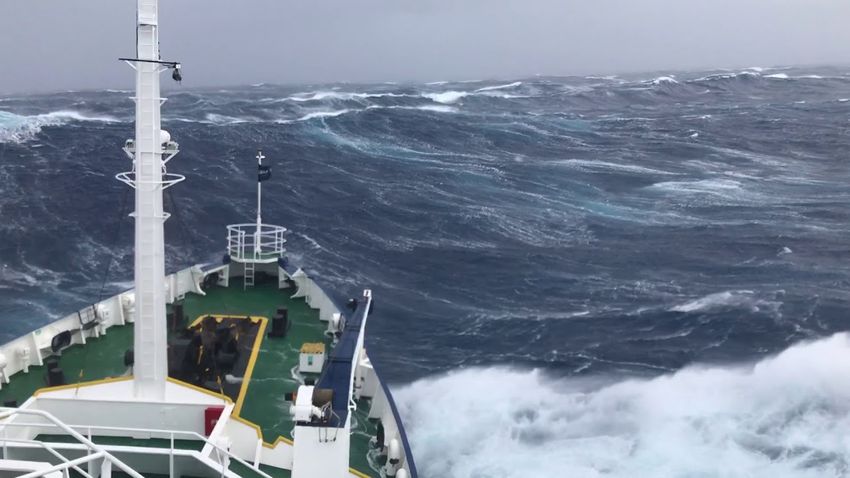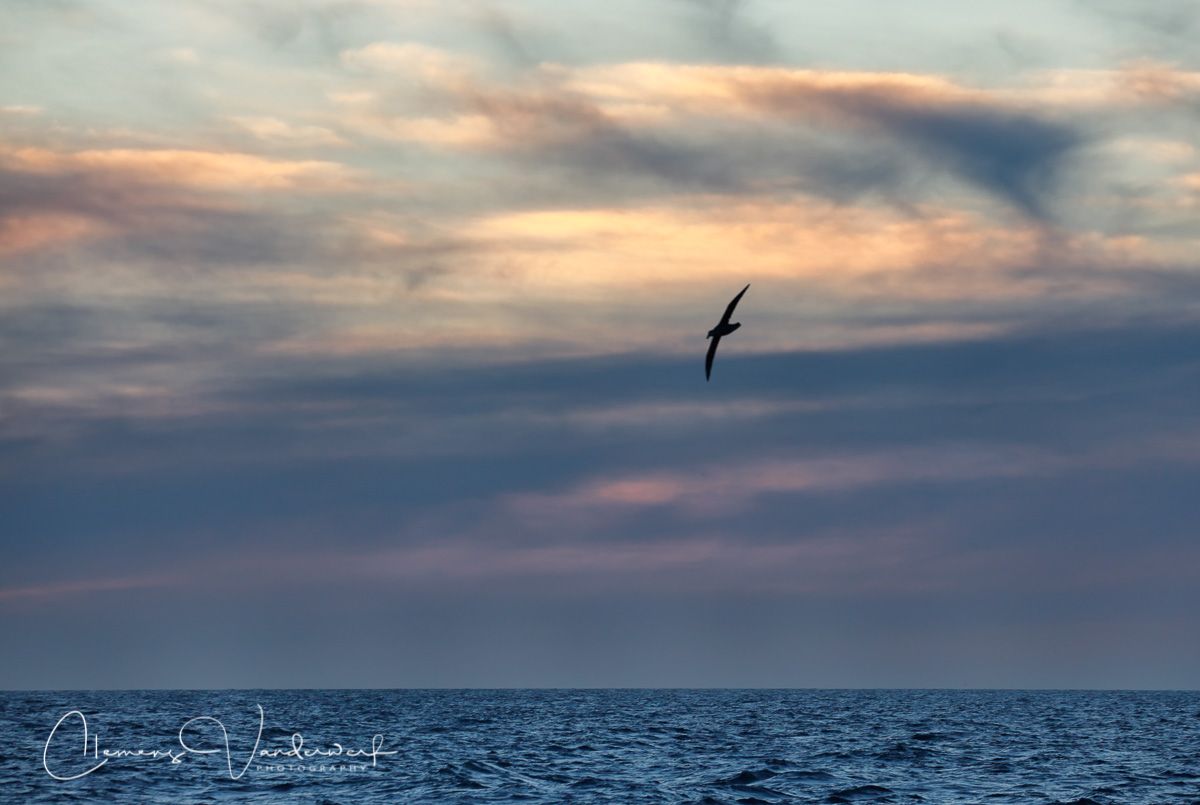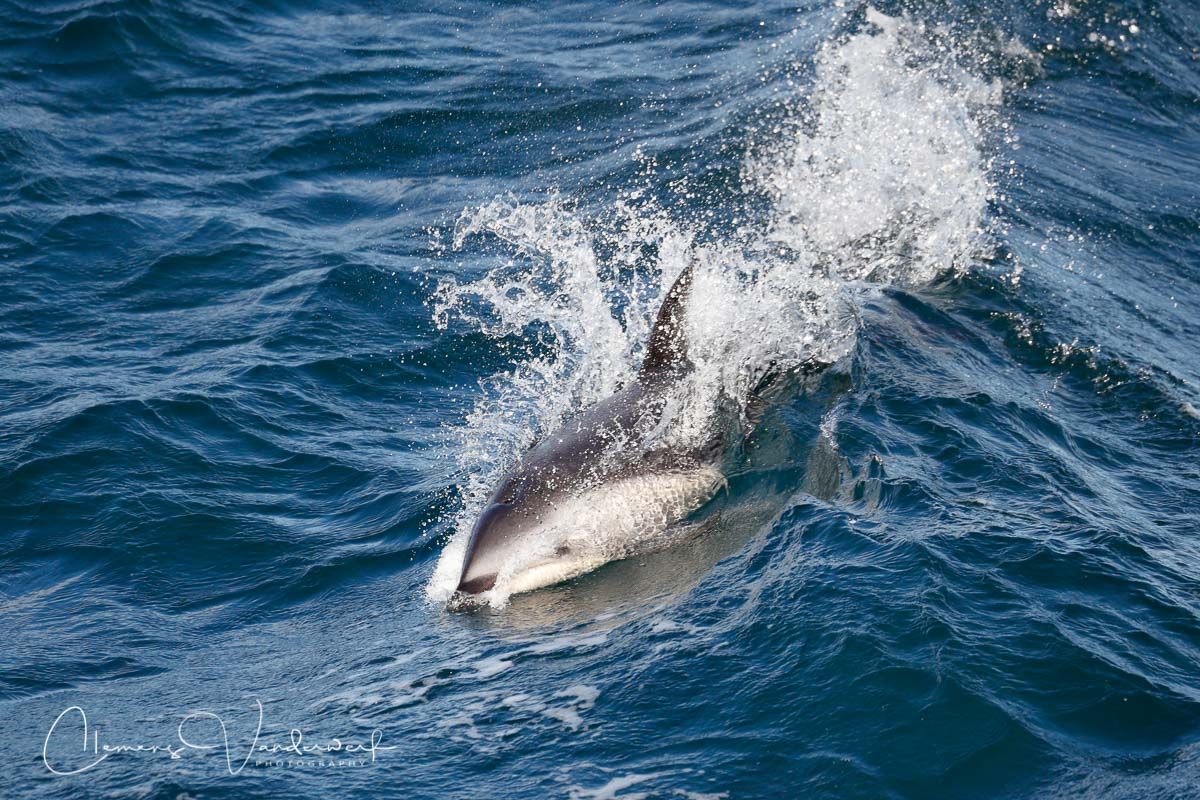Photographic story of A Voyage Through The Southern Ocean
A voyage through the Southern Ocean
You probably did not notice but I have not written a blog post in a long time. Social media is partly to blame for the lack of activity. I started becoming more active on Facebook and Instagram, which is so much easier then having to get yourself motivated to write a blog post. With a simple click and a few short sentences you post very easily on social media, but there is not a lot of depth. Lately, I started noticing that the reactions to my Facebook postings are declining. I am sure it has nothing to do with the quality of my images, but just a general fatigue that people have with social media. Reason enough for me to start up my blog activity again and provide a bit more depth to my images and what I am experiencing while taking them.
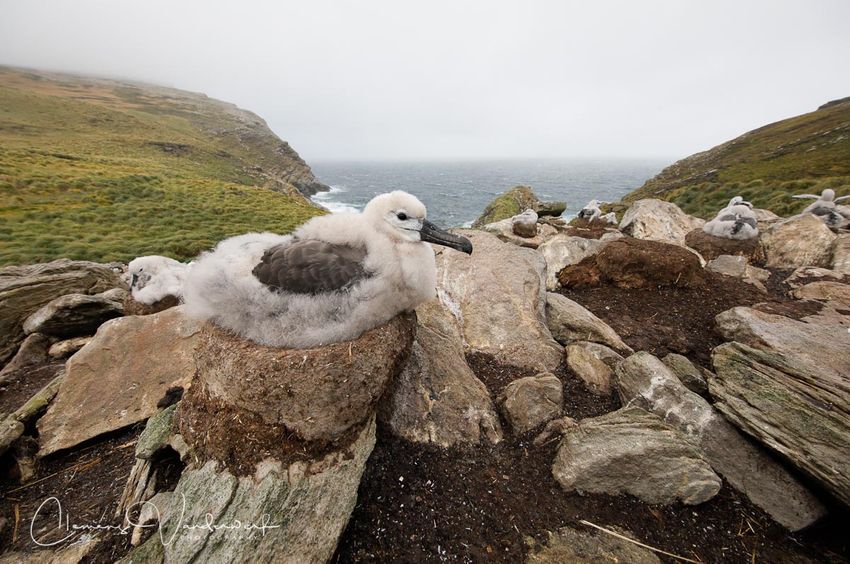
Photographic story of A Voyage Through The Southern Ocean
I had the opportunity to go back to South Georgia Island and Antarctica in February/March this year. As you know, I love the remoteness and stunning scenery of the Southern Ocean, so any chance to go there is not wasted on me. This time I went with Oceanwide Expeditions on their vessel Plancius. On my previous expeditions to South Georgia and Antarctica I had been on another vessel from Oceanwide, the Ortelius. Although, the expedition team on board the previous times was from Cheesemans, this time it was Oceanwide's own expedition staff who ran the voyage.Click here to see the story
The quality of the vessel and the hotel services on board were excellent, as was the expedition staff, but this trip was not geared to photographers and more focused on providing a general experience for first-timers to the region. The breakfast-lunch-dinner schedule was leading the daily activities, which made it tough for a hard-core photographer like me to get the maximum out of landings and zodiac cruises. The typical time ashore was between 2-3 hours during those hours of the day that the light is not optimal. Not one time did we make an early landing or stayed out late to benefit from sweet morning or evening light. I kind of knew that when I signed up, but you hope for the best. All the decisions on board greatly depend on the willingness of the expedition leader to go the extra mile, and make it happen.
Another factor that played an important role was the level of policing that took place while ashore. Obviously, Oceanwide and all other tour operators have to abide by the IAATO (International Association of Antarctica Tour Operators) rules, which set strict boundaries on the number of people that are allowed ashore at one time, and how close you are allowed to get to the wildlife. That is necessary and understandable, but the Oceanwide expedition staff was a bit too enthusiastic in making sure that nobody was able to break those rules, which made it tough to create the images that I had in my mind.
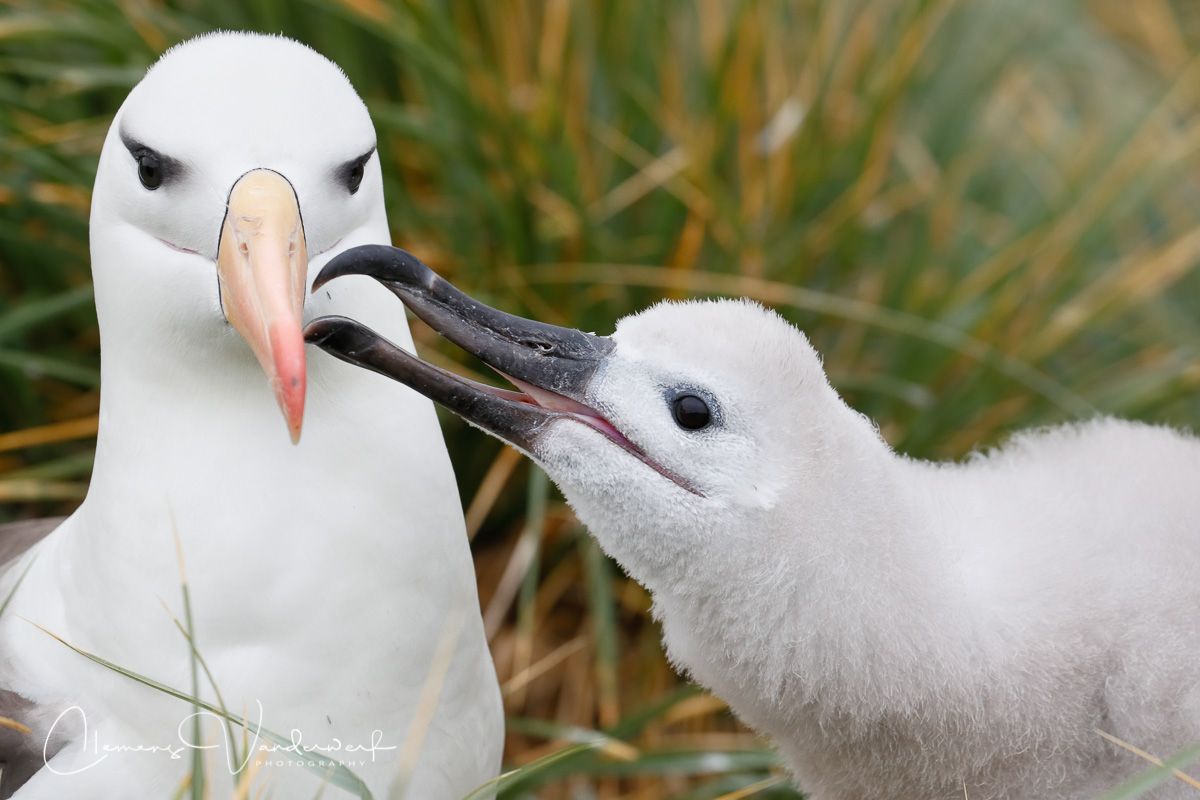
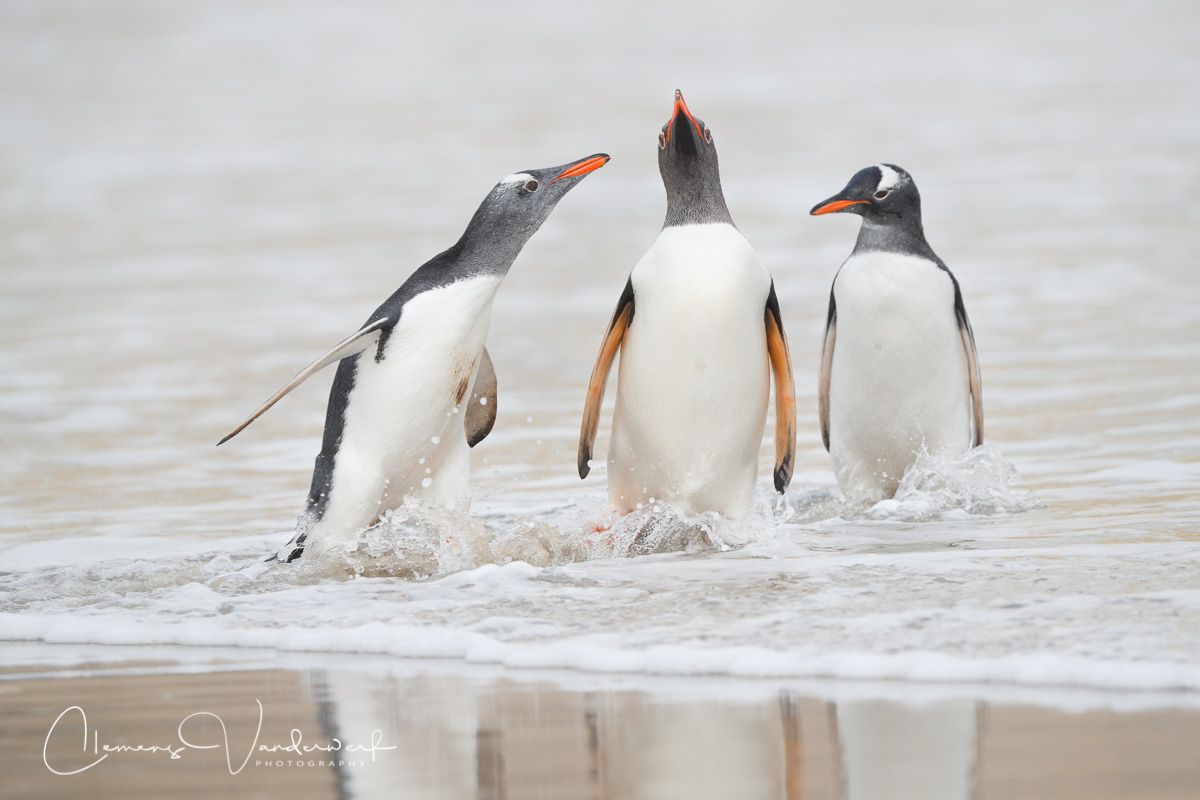
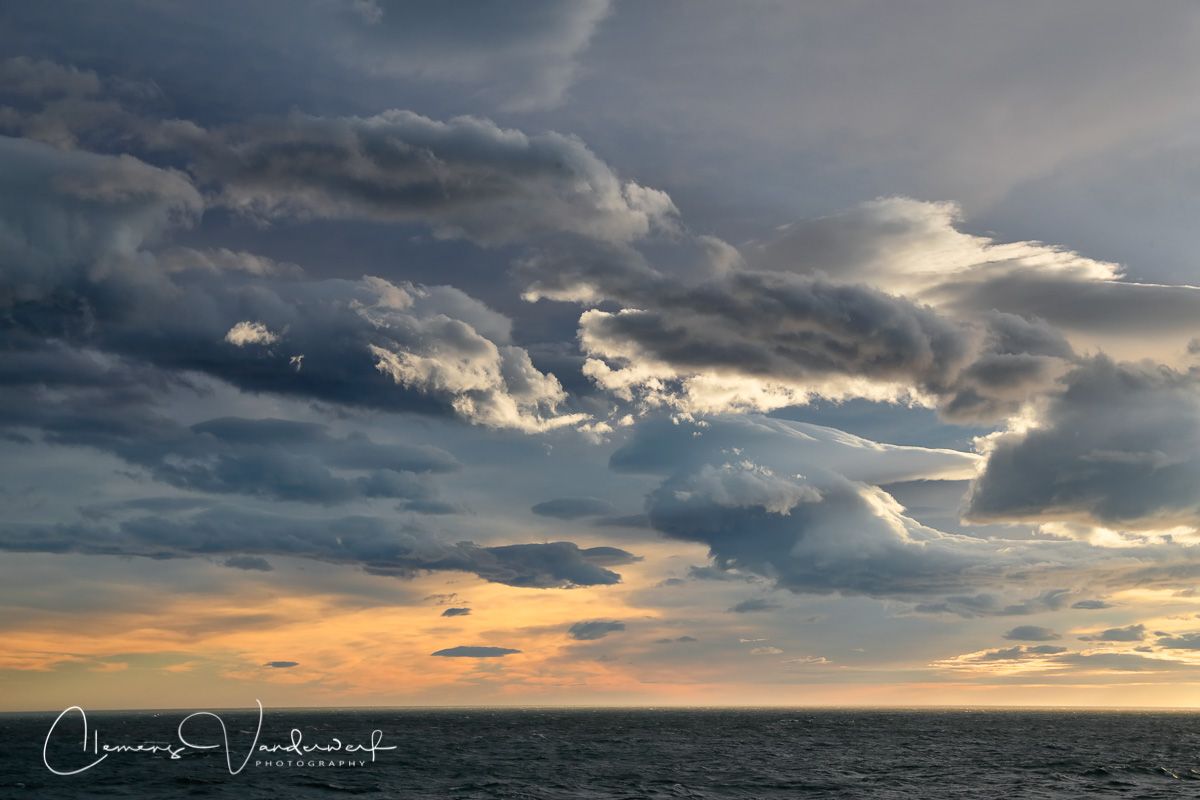
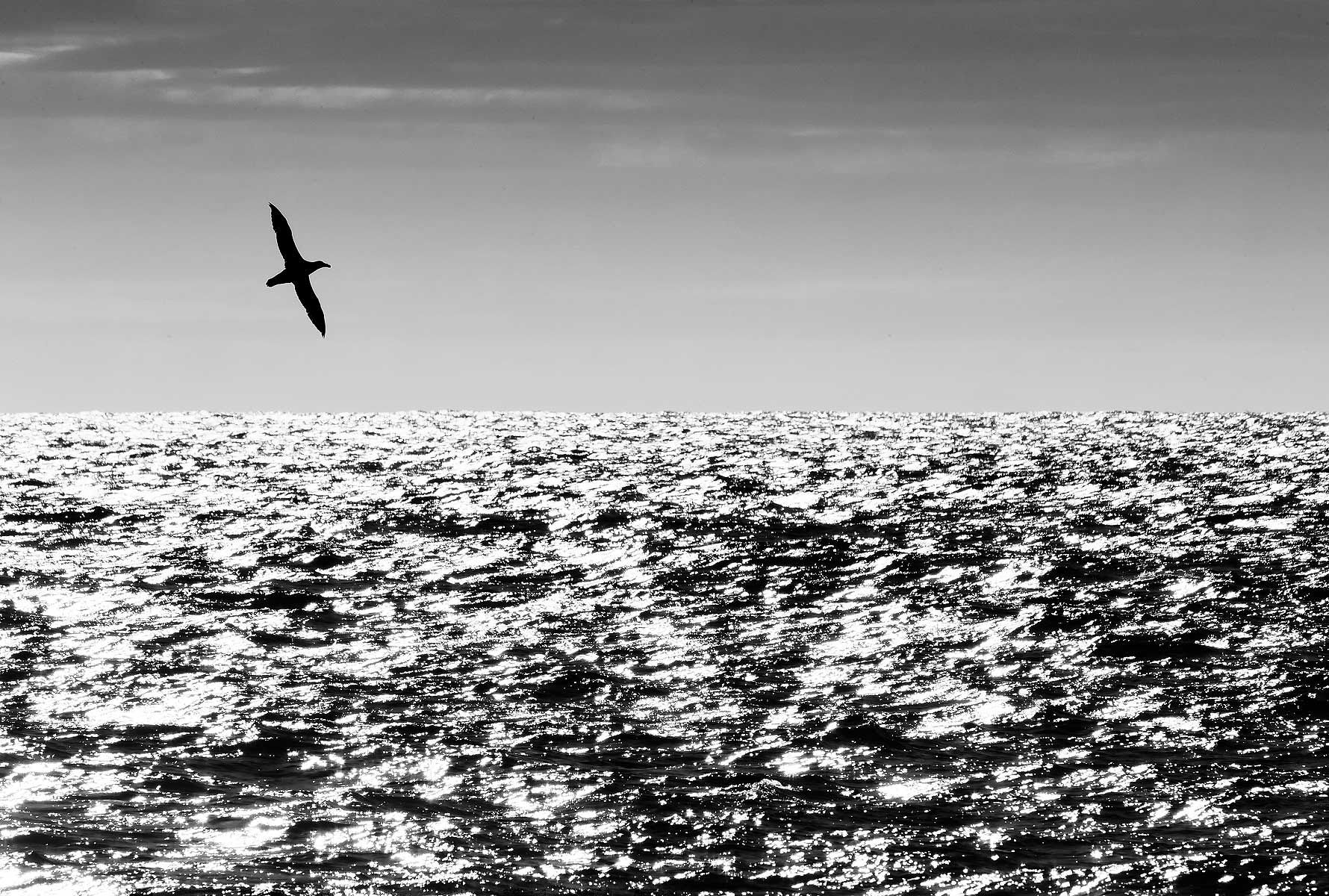
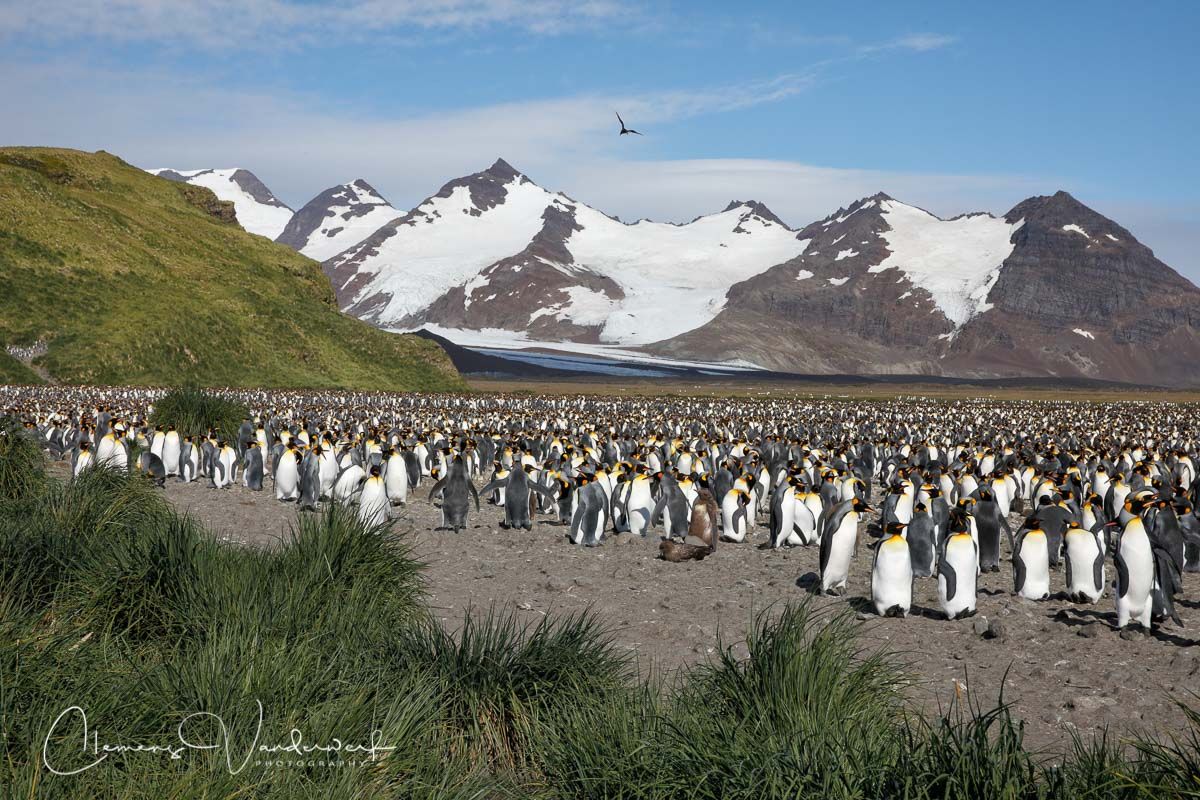
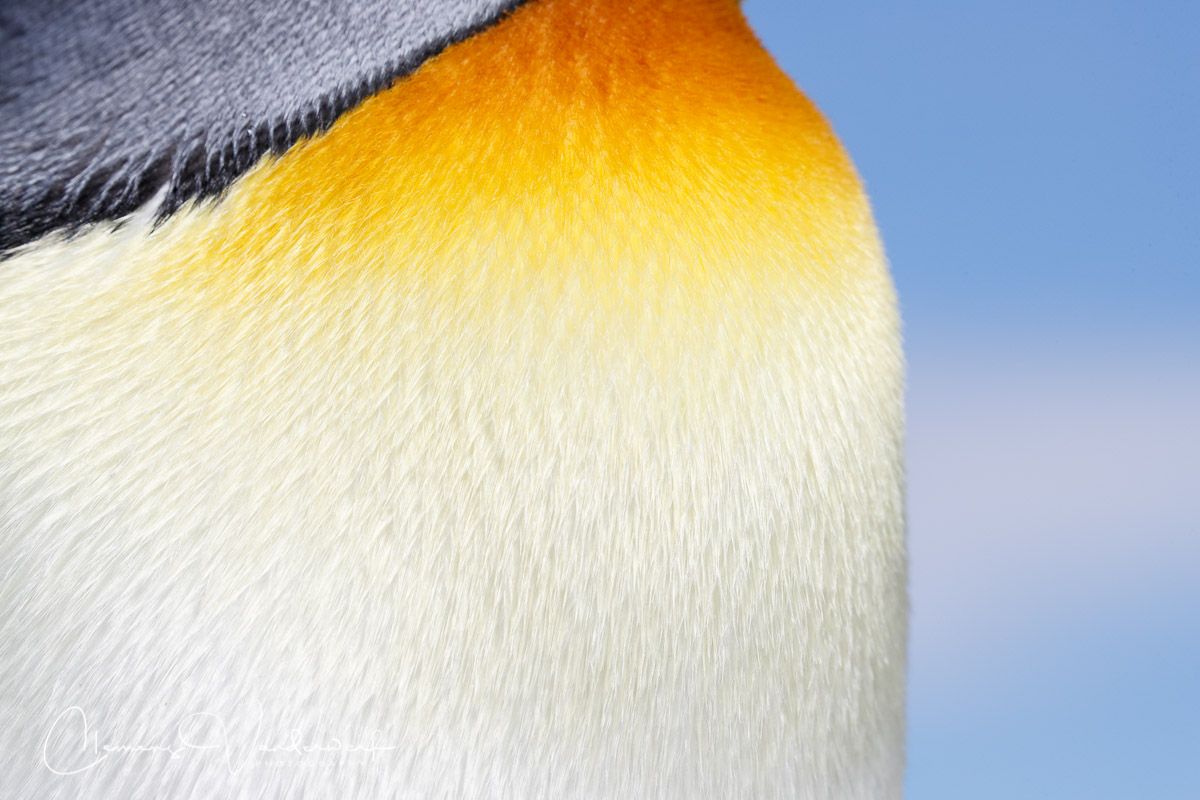
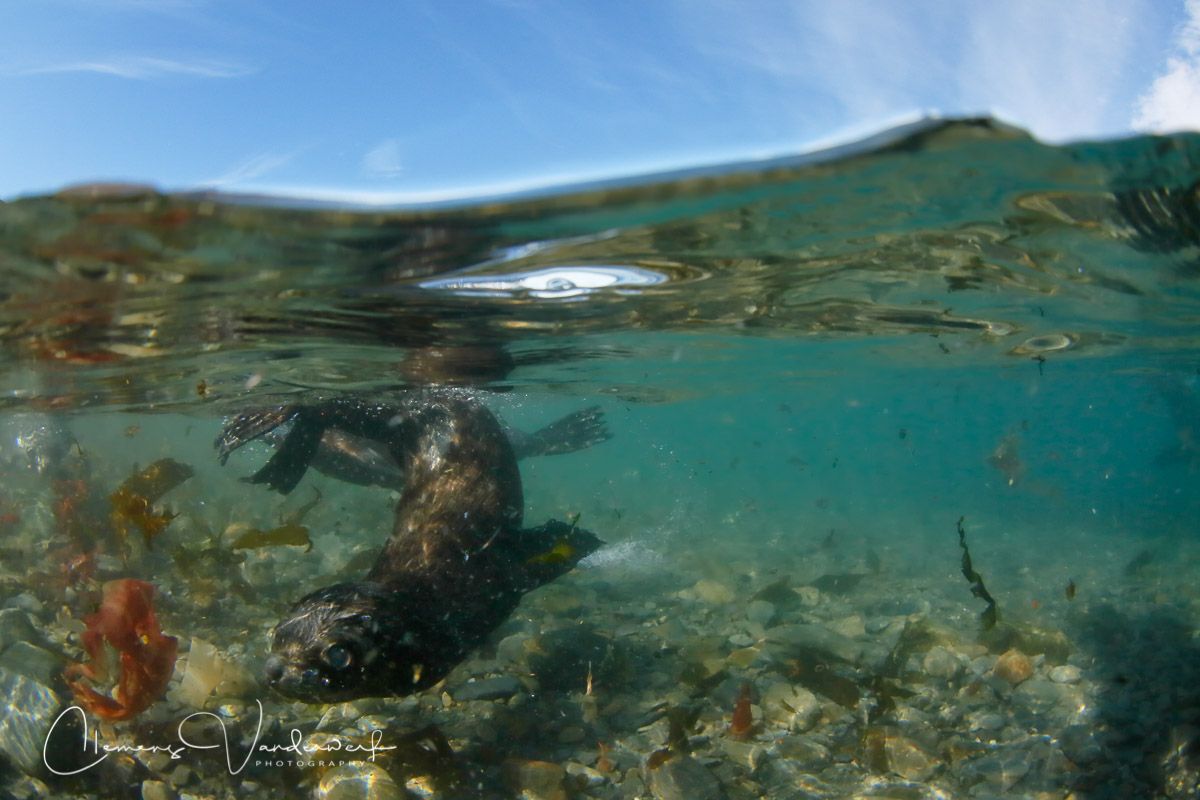
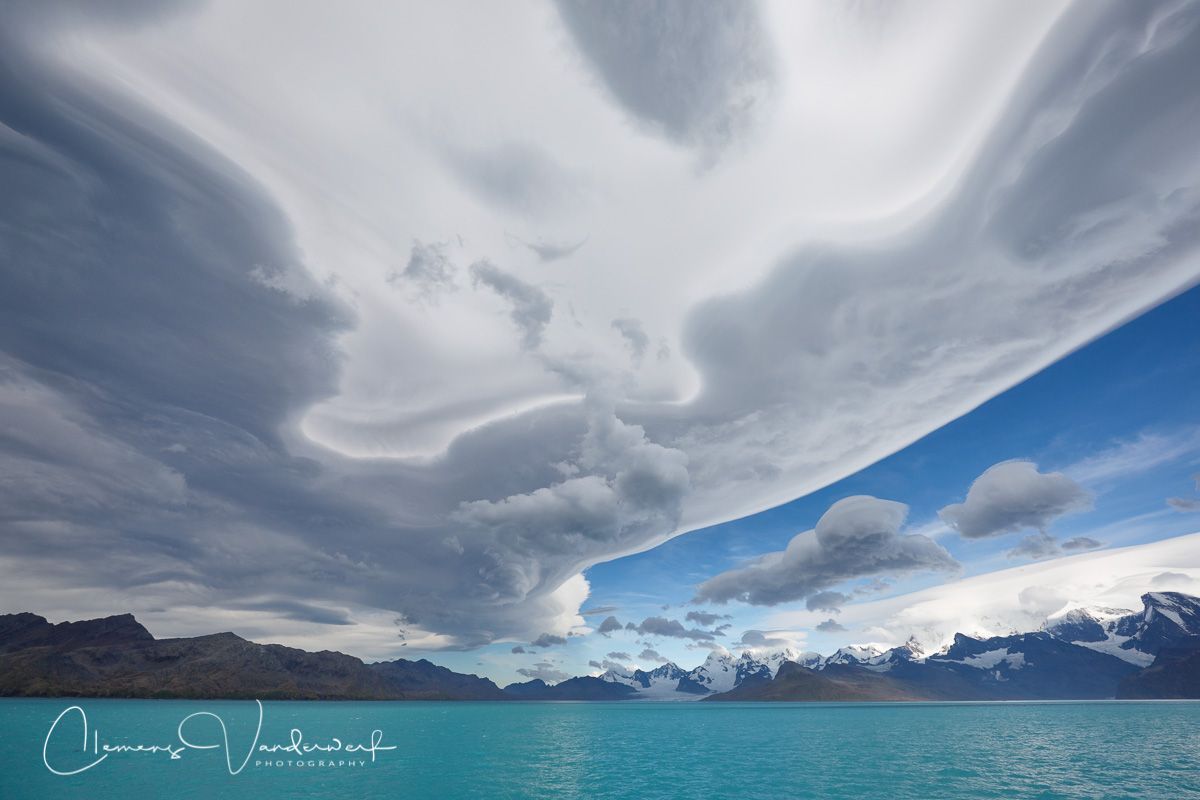
After leaving Ushuaia we made our way to the Falkland Islands were we made two landings.
The first landing was at West Point Island, were we visited the Black-browed Albatross and Rockhopper penguin colony. The albatrosses had already pretty large fluffy gray chicks who would fledge in a couple of weeks. Unfortunately, the Rockhoppers were to far away to photograph. Our next landing was opposite West Point Island on the mainland at Grave Cove. Here we walked across the land with the French owner of the farm towards the beach where it was a coming and going of Gentoo penguins. We spend the night and the next morning in Port Stanley, before we set sail towards South Georgia Island.
Our first landing in South Georgia was at Salisbury Plain where we arrived early in the morning at daybreak. We were supposed to go ashore about a mile to the right of the King Penguin colony but after breakfast we landed to the left of the colony. I complemented the expedition leader with that choice, but he did not understand why it made a difference. I explained that in the morning the light was coming from the left, and by landing to the left, everyone would be photographing with the light over your shoulder instead of taking pictures into the light. I guess I was the only one concerned with the direction of the light!

After a stop at Prion Island in the afternoon to see the Wandering Albatross chicks we made our way along the coast for a morning landing the next day at Saint Andrews Bay, another spectacular large King Penguin colony. I was on deck by 5am when we were approaching the bay. It was dark, but there was a sliver of light peaking through the clouds. Upon getting closer it was a rainbow that pointed at the colony. I am not a particular religious person, but I certainly believed that was a good omen and we would have a great landing at Saint Andrews Bay. Not much later the expedition leader announced through the ship's intercom system that we were not going to land at Saint Andrews Bay, as the winds that came off the glacier were too strong to operate the zodiacs and make a safe landing. Arghhh......
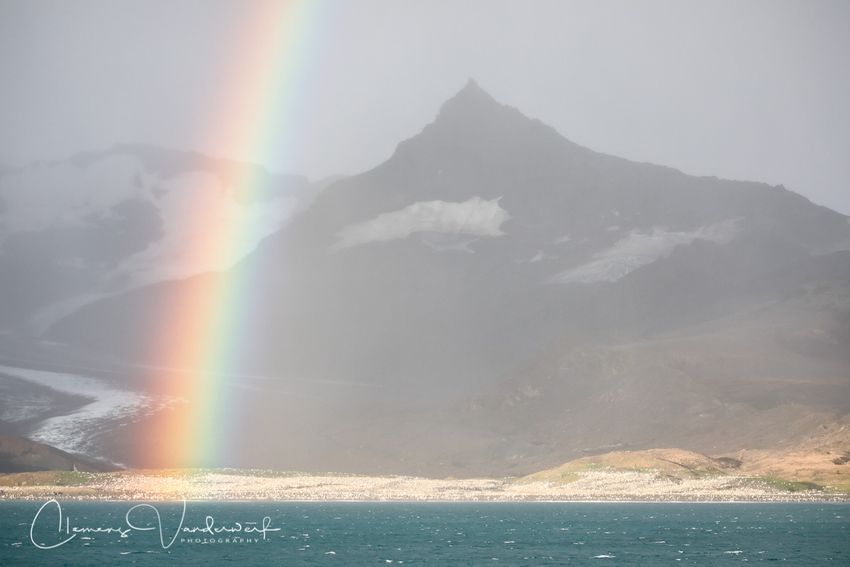
With an afternoon stop at the secluded bay of Godthul we continued toward Fortuna Bay
Were we would spend the night and would make a landing in the morning. Lenticular clouds welcomed us at daybreak, and after breakfast we went ashore. I had brought my underwater housing and was determined to take some different images with the housing. While everyone walked towards the King Penguin colony, I spend two hour in knee deep water with about 150 baby Fur Seals trying to get some nice and different images, all the while being watched by the expedition leader. It was such a great experience to be surrounded by these playful young Fur Seals. They would curiously approach me and check me out while looking at their own reflection in the dome of my underwater housing. Once and a while one would nibble on my arm, and quickly disappear again. It was not easy to get good shots, but I greatly enjoyed myself feeling very privileged to be surrounded by these amazing young animals. Can you imagine that these youngsters will be large boys next season and block any beach access during the mating season and turn into aggressive defenders of their territory.
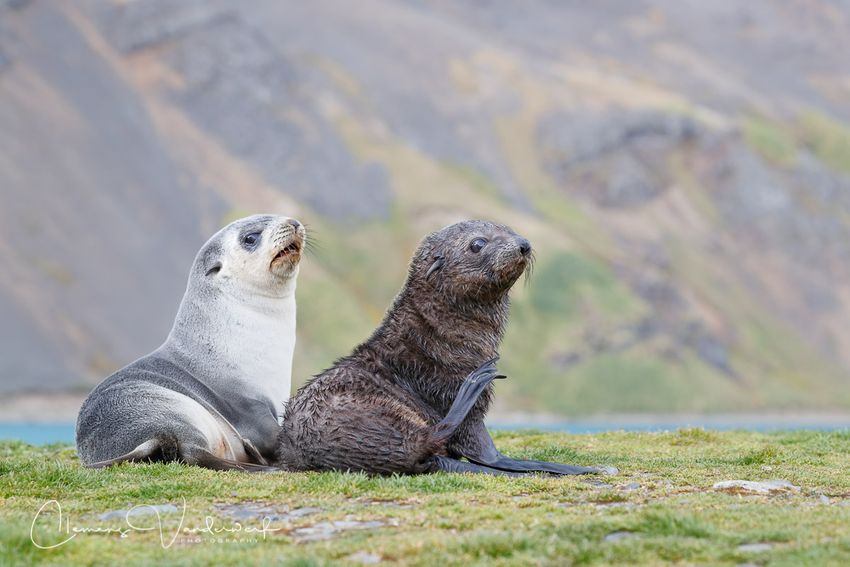
Every ship arriving at South Georgia Island has to visit the old whaling station of Grytviken, where they have to clear with the island's authorities. Apart from walking through the old remains of the whaling station, and a visit to the museum, a visit to the grave of Sir Ernest Shackleton, accompanied with a toast on his accomplishments is standard practice for every visitor. When we arrived at Cumberland Bay in the afternoon, the sky was full of amazing lenticular clouds. The cloud formations were large and extended over a large area and provided a beautiful sight. The research staff of the British Antarctic Survey who is based at Grytviken had not seen such a spectacular cloud formation this season.
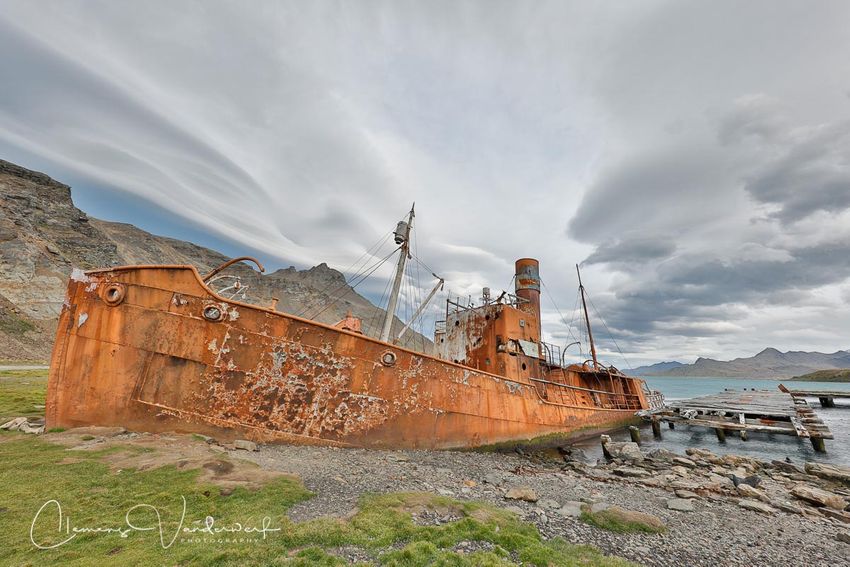
With a quick zodiac cruise through Cooper Bay the next morning and an afternoon visit to Drygalski Fjord our visit to South Georgia came to an end, and we set sail in southerly direction towards the Antarctic Peninsula. With relatively calm seas we approached the South Orkney Islands, where an abundance of large ice bergs greeted us from far away. When we came closer you could experience the enormous size of the ice bergs and the mesmerizing shapes carved by the sea, tides and wind. Remains of Chinstrap Penguins were clearly visible, as they use these ice bergs as floating colonies, and leave their mark with orange colored penguin poop. A couple of penguins were still visible, but most of them took to the sea as it was already late in the season.
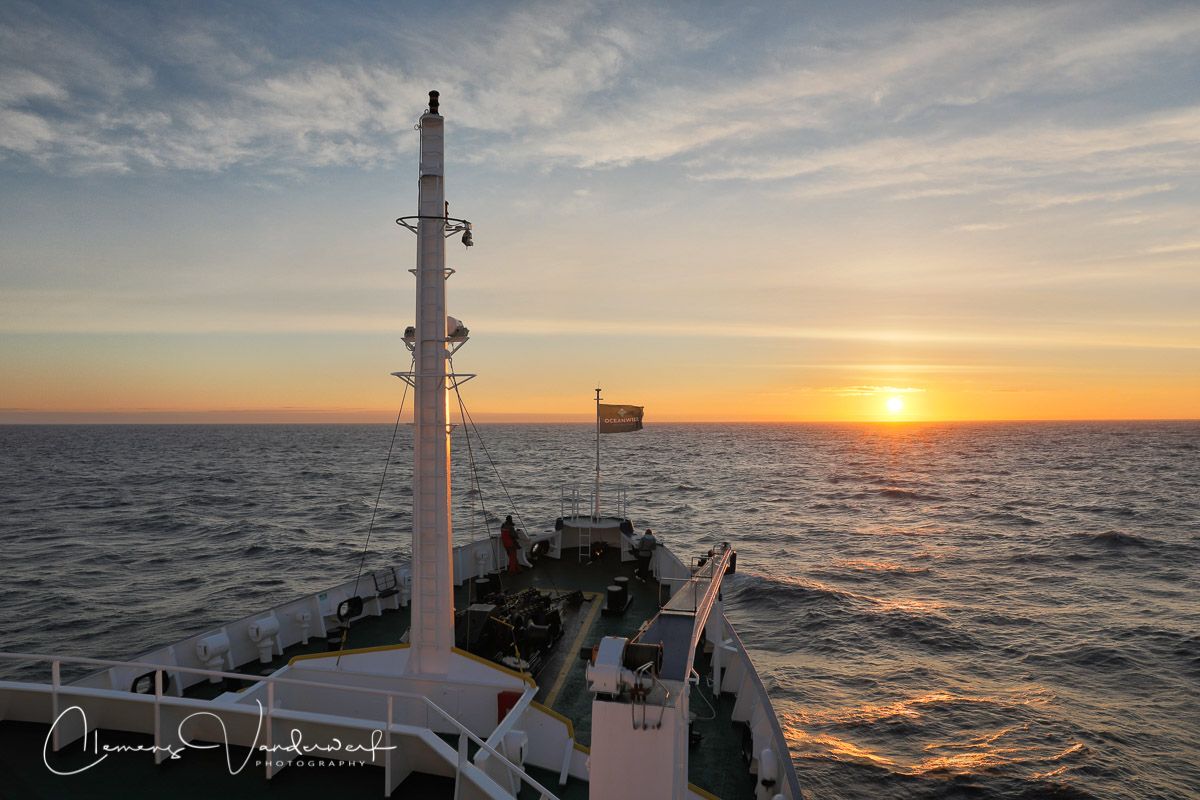
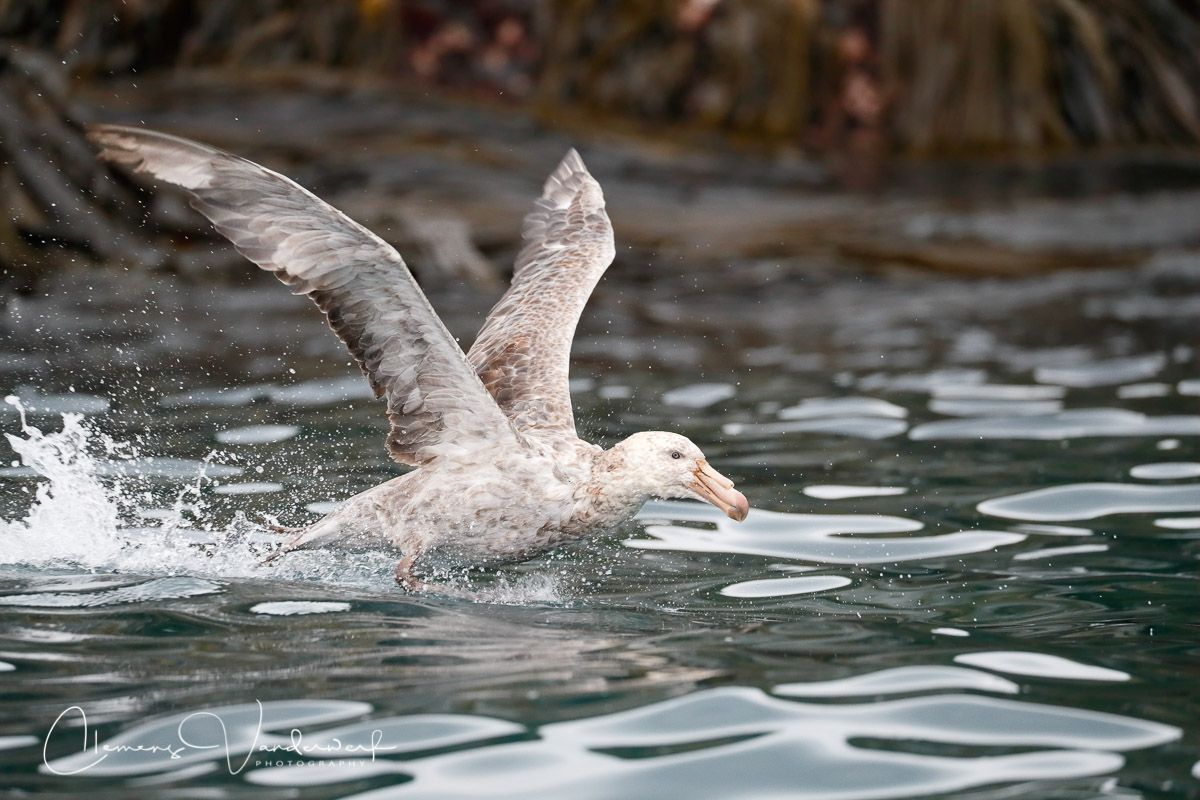
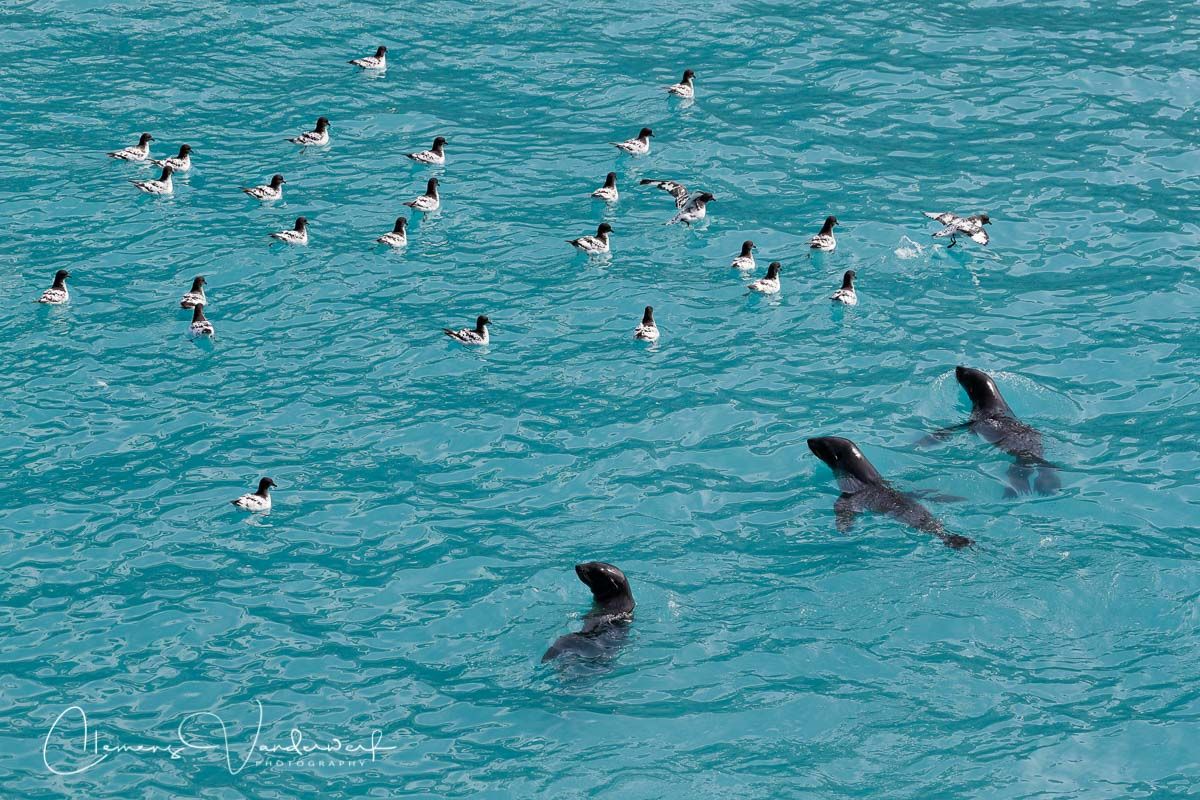
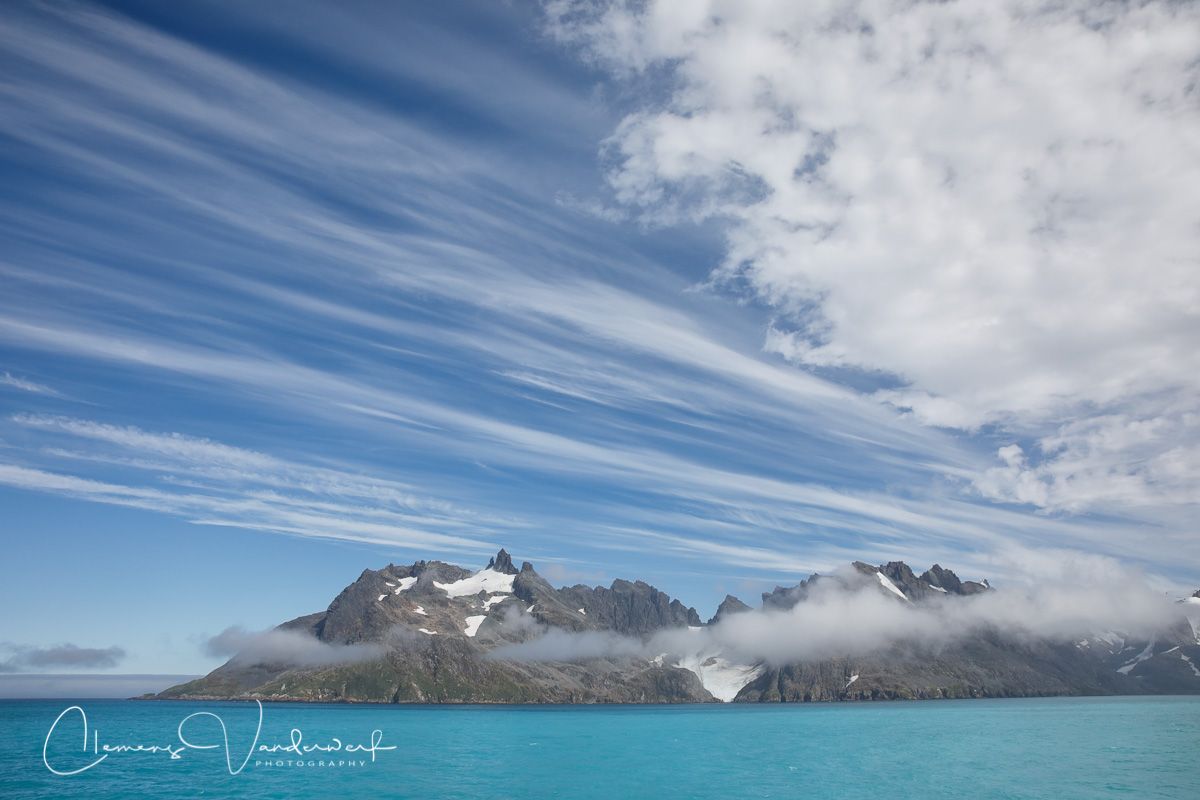
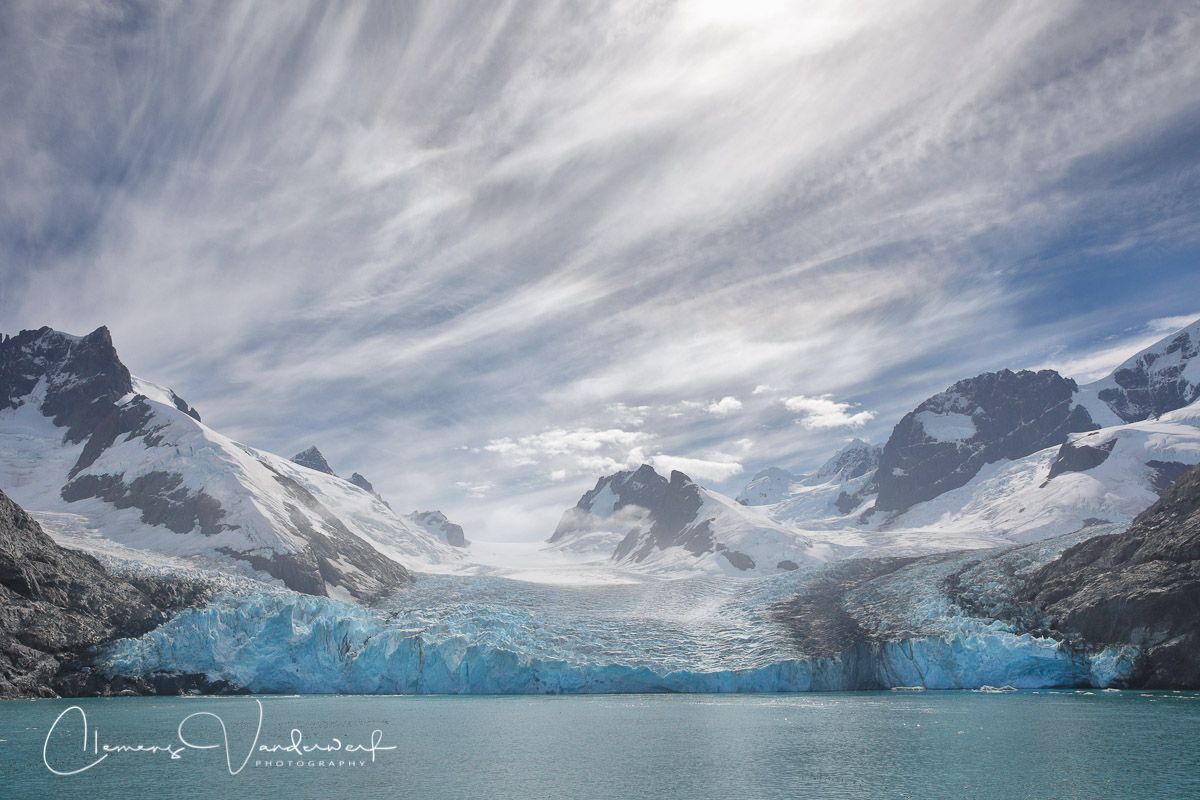
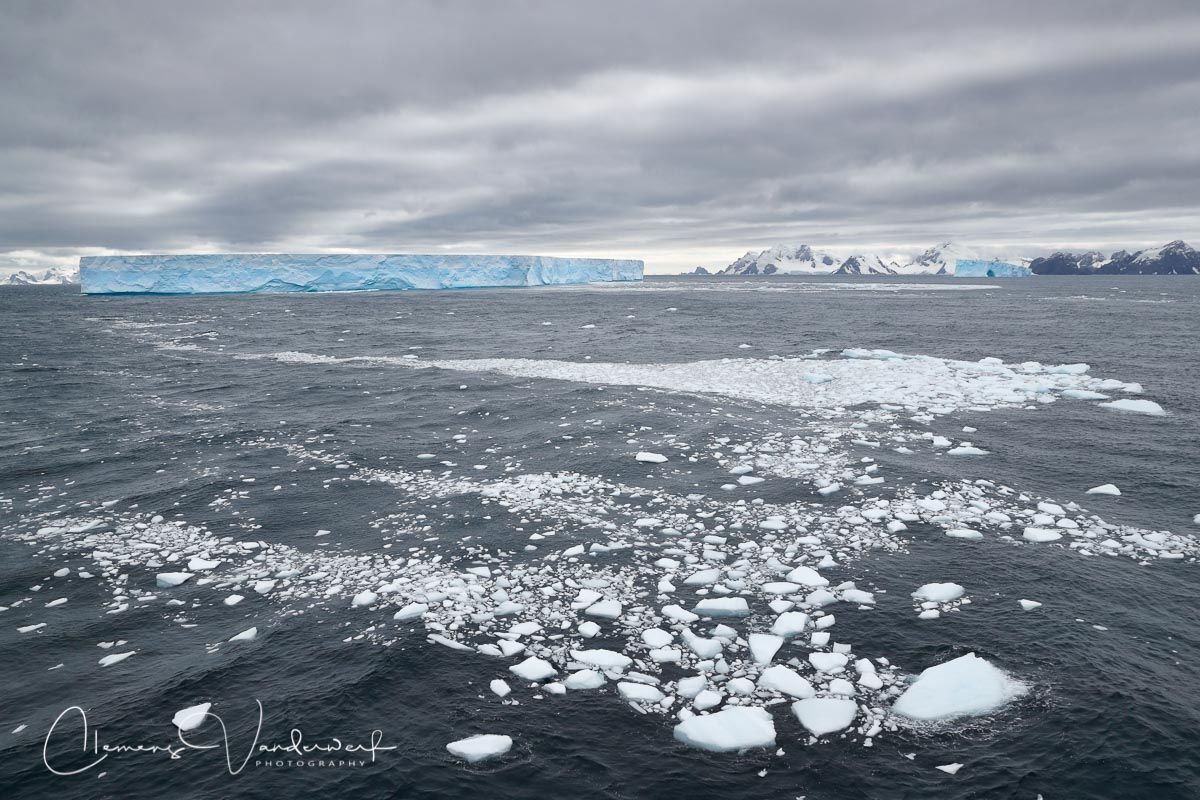
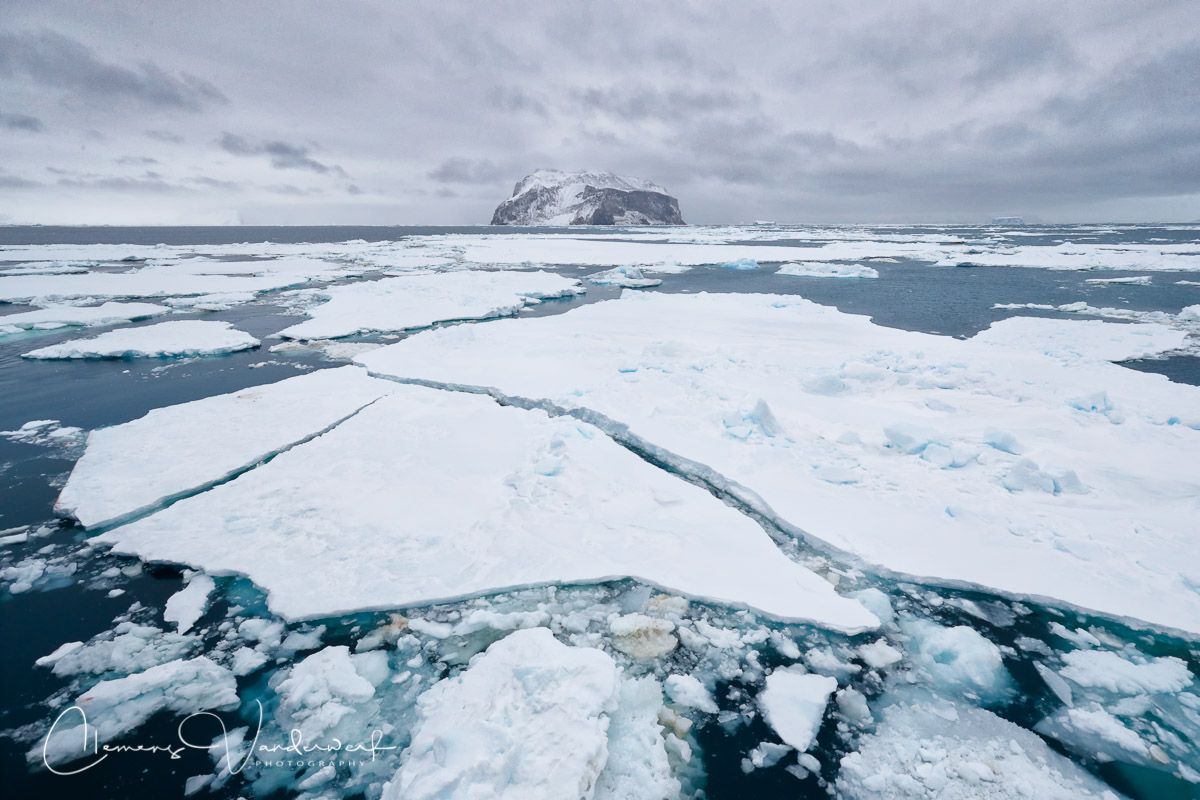
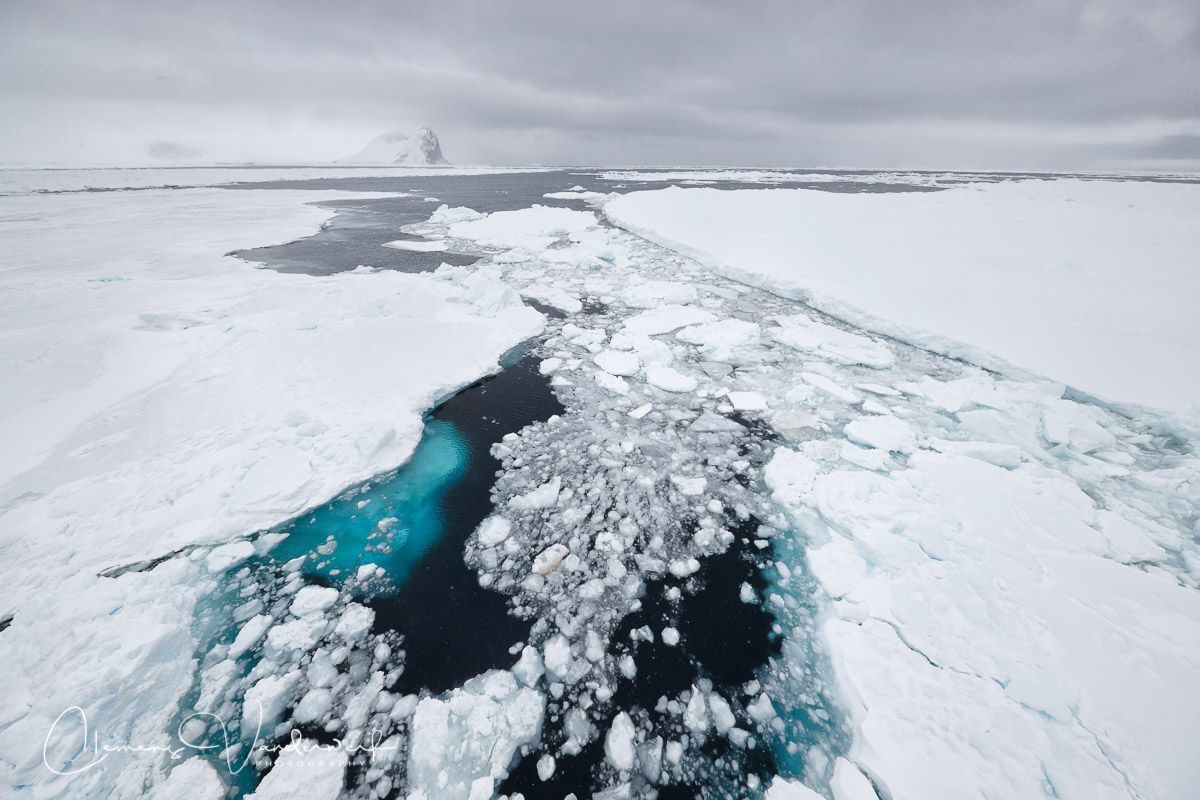
Leaving the South Orkney Islands behind we arrived early morning at the Antarctic peninsula, where we made our way into the Antarctic Sound.
The weather was substantially colder than what we had experienced on the voyage down to the peninsula. The wind chill played a big part in this as well, but with enough warm clothes and an occasional cup of hot chocolate in the lounge, it was great to be on deck while we crushed through the ice. I used an extremely wide-angle lens while hanging over the bow of the vessel to create some images of the every changing ice patterns underneath me.
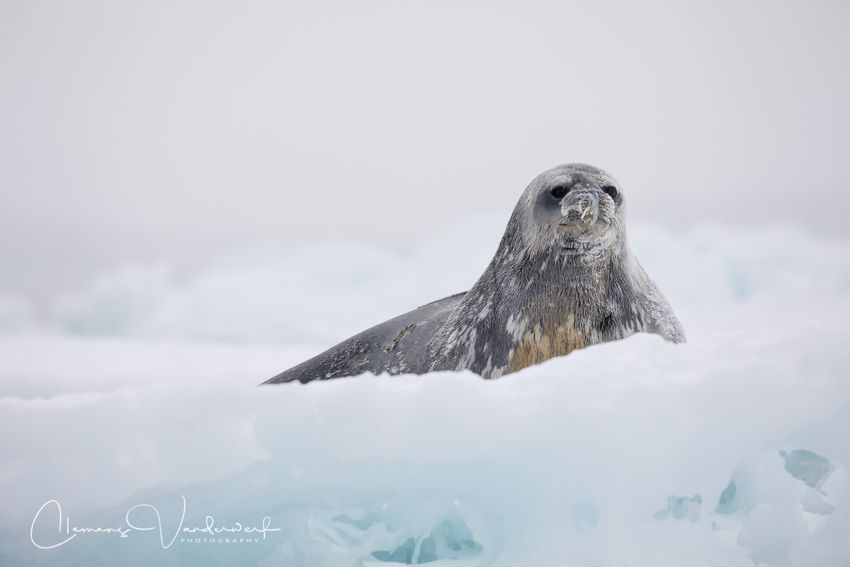
We made an afternoon landing at Brown Bluff in bone-chilling weather and snow flurries. Large ice cubes (small bergs) had stranded on the beach due to low tide, and penguins had to find their way through to reach their nesting colonies. A Weddell Seal was stuck on one of the stranded ice cubes, and had to wait until the ice cube would float off the beach again with high tide before it could resume its journey.
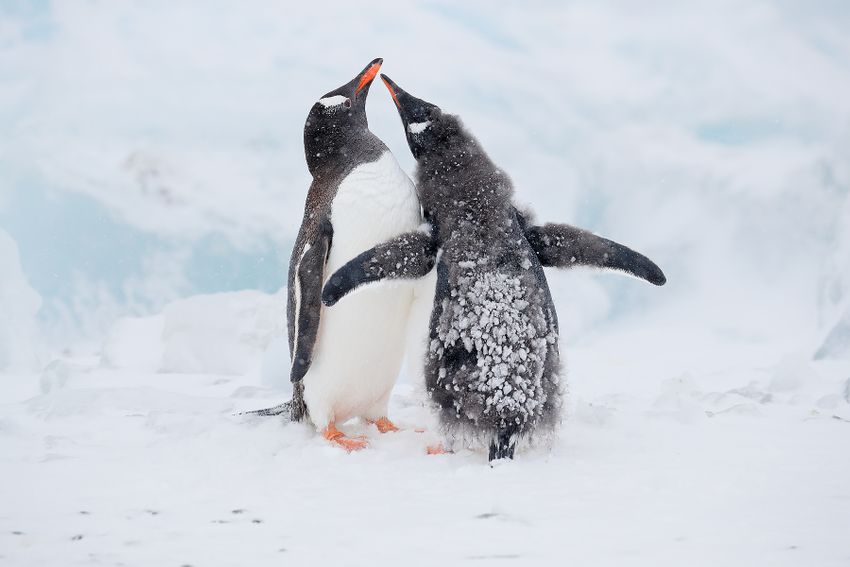
During the night we made our way south through the Bransfield Strait and made a stop at Cierva Cove the next morning. The Cove is a great place for zodiac cruising and the chances to see various whales is pretty high. We saw a large amount of Humpback whales and a Minke whale swam underneath the zodiac. That was a pretty surreal experience. The Minke whale approached the zodiac from behind before it decided to dive underneath the zodiac. My view was blocked by other shipmates in the zodiac, so I did not get a shot from the surface. In a split second I dropped my underwater housing in the water and pressed the shutter while the whale came underneath the boat. Although the images were largely underexposed they provide a different view of the subject.
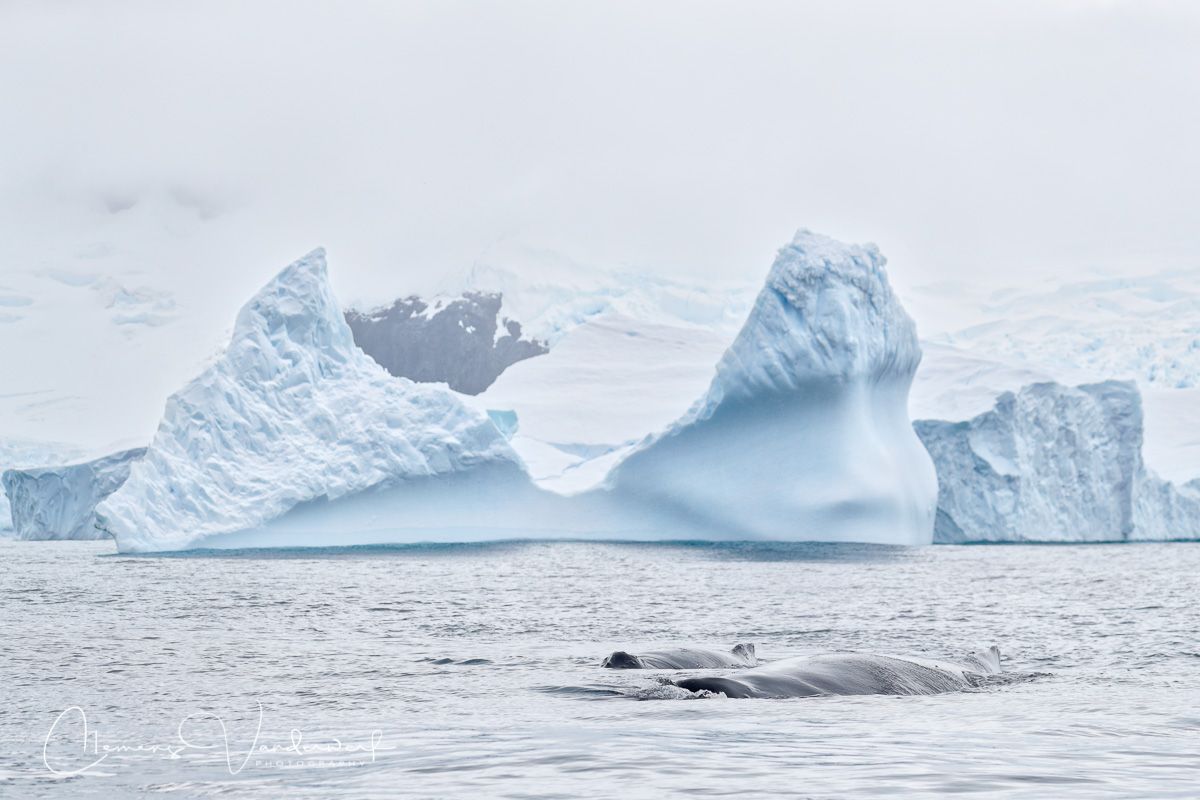
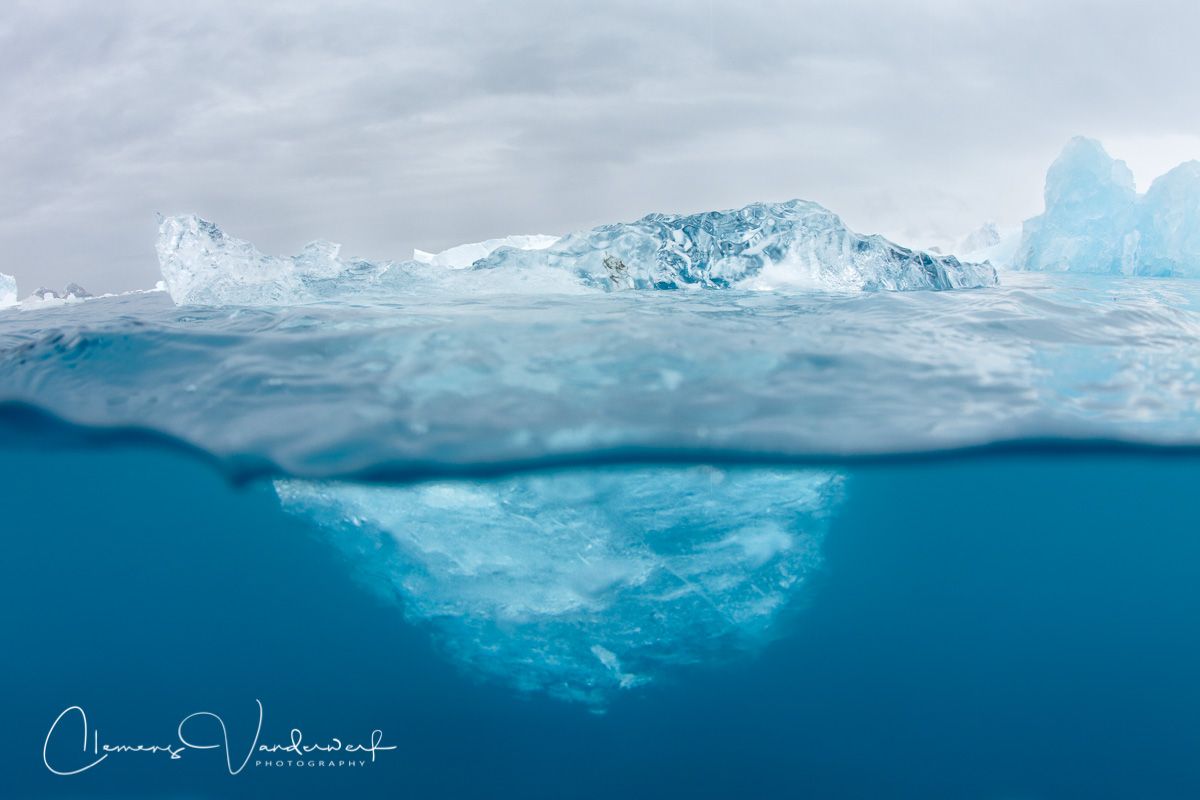
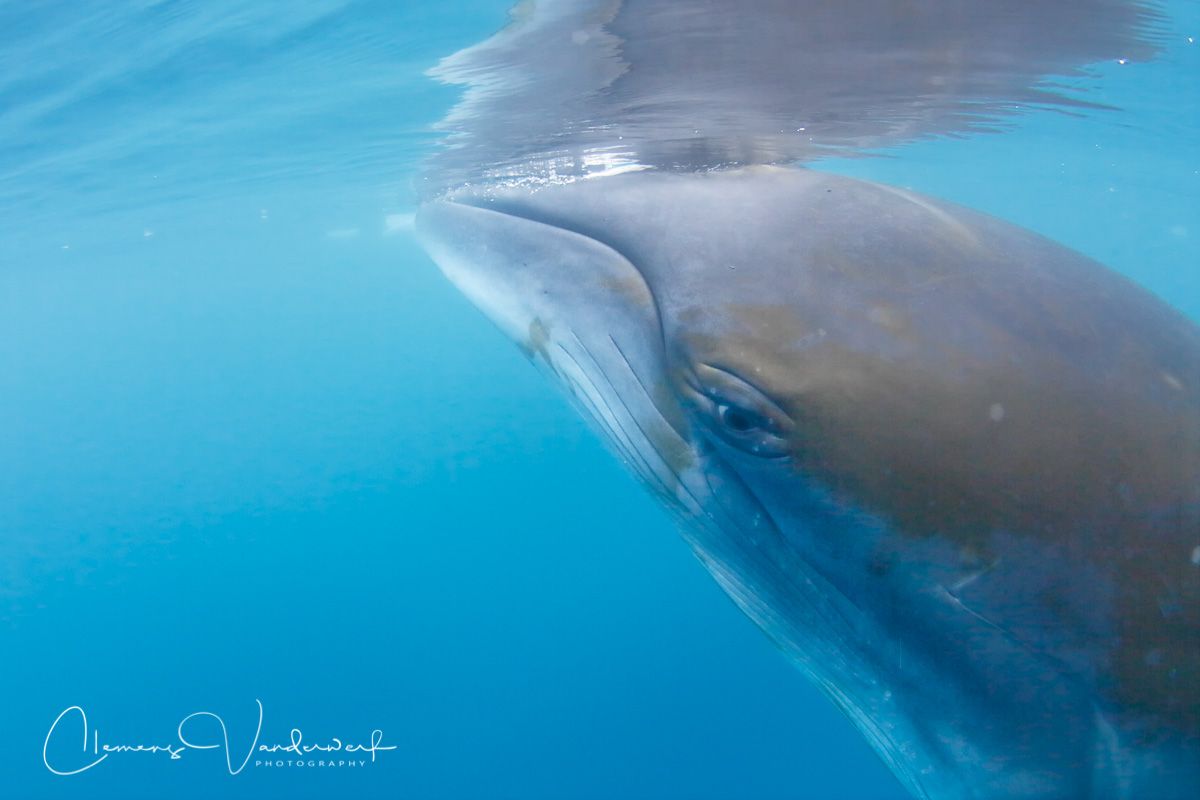
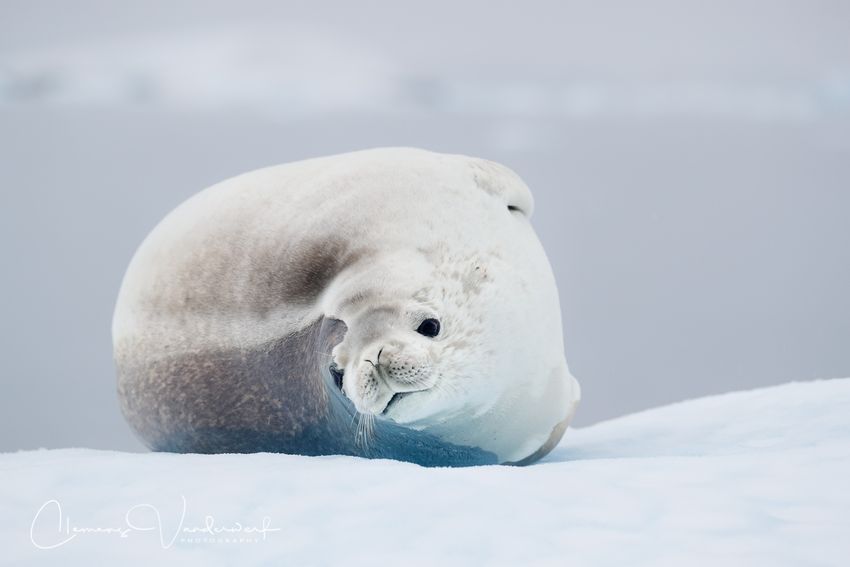
In the early morning we approached the entrance to Paradise Bay. The weather was gray and dingy with low overcast clouds and a snow flake here and there. The visibility and contrast was not the best circumstance to photograph in, but you have to work with the cards that you get dealt. While cruising the bay in the zodiac we came across some Crabeater Seals and a Leopard Seal. They love to nap on small ice flows to gain back some energy for their next fishing and hunting trip.
Paradise Bay
"The high mountain tops surrounding the bay, and the gigantic amount of ice on top of them will always amaze me. It is a surreal landscape that is unprecedented and nowhere else to be found on planet earth. The sheer size becomes very clear if you see a rather large cruise ship in front of one of the glaciers as a tiny little spot in a big world of ice."
Photo: View of Paradise Bay
With a last landing on the peninsula at Cuverville Island we headed further north towards the South Shetlands Islands. A stop was planned at Deception Island, the inactive volcano island where you can actually sail into the caldera. The caldera is surrounded by black volcanic beaches and a couple of abandoned whaling stations with rusty remains. We landed in Telephone Bay where we climbed up to the edge of the caldera. The wind had picked up substantially and was gusting 35-40 knots across the desolate black sand beach. It was a sign of what was to come in the coming days.
We left Deception Island and made our way north towards the South America continent again. The wind and waves were slowly increasing as a large depression was about to cross from west to east through the Drake Passage. The barometer was slowly dropping, so it was inevitable that we would experience some severe weather during the crossing. The next day the barometer was giving values in the 915-925 range, and the wind had picked up to 50-60 knots with waves of 30-40 feet rolling by. The captain did an amazing job to keep the vessel slightly off the wind and waves. It took about 12 hours to slowly work our way through the depression, before the conditions eased up a bit and life on board became a bit more comfortable again. It was the worst I had seen it in the Drake Passage, but it was a fun experience for sure. Hold on for dear life, quite literally!
When we approached the Beagle Channel the weather had improved substantially and you could actually be on deck and enjoy the sunshine and various bird species flying around the vessel. We anchored in the Beagle Channel for a last evening on board. I was able to give a presentation on this last evening about "Taking better wildlife images" and presented a selection of my images taken during the voyage. Everyone greatly enjoyed the presentation and images and the general consensus was that the presentation would have been more relevant and effective at the beginning of the voyage, as that would have been more helpful for the guests. I fully agreed, but was not in charge of the planning
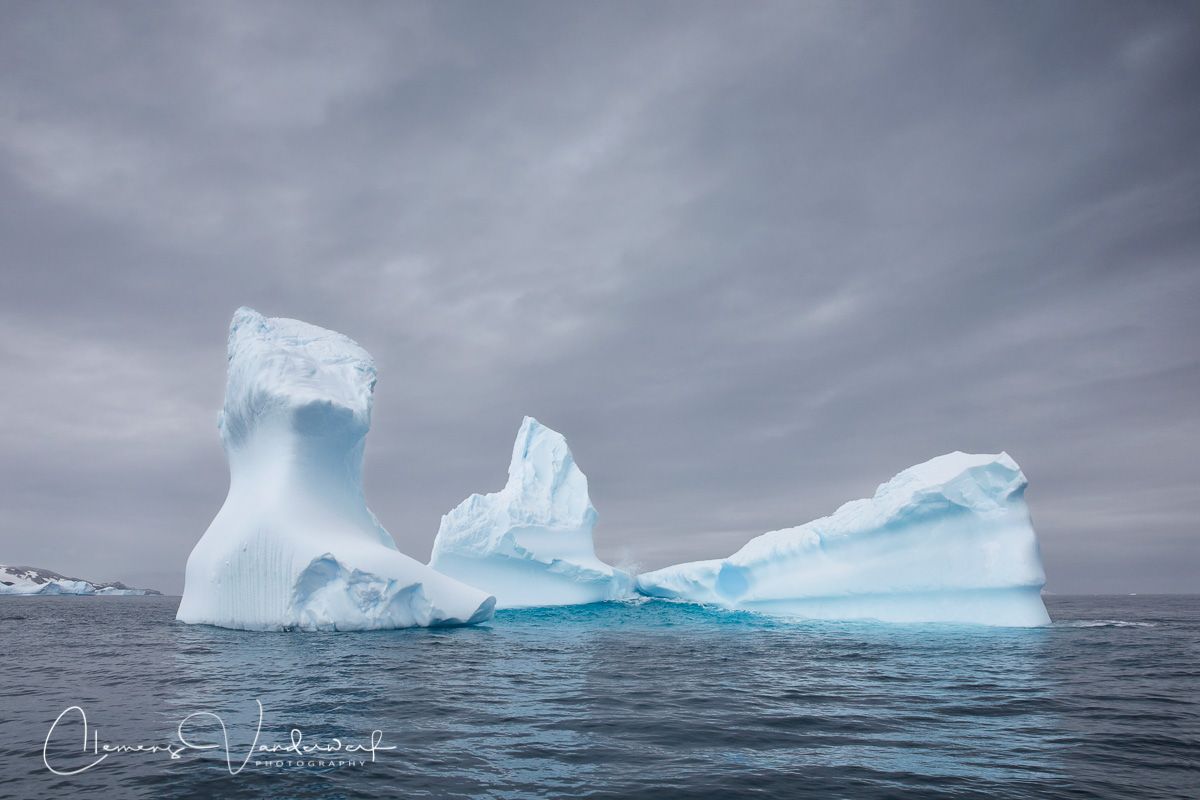
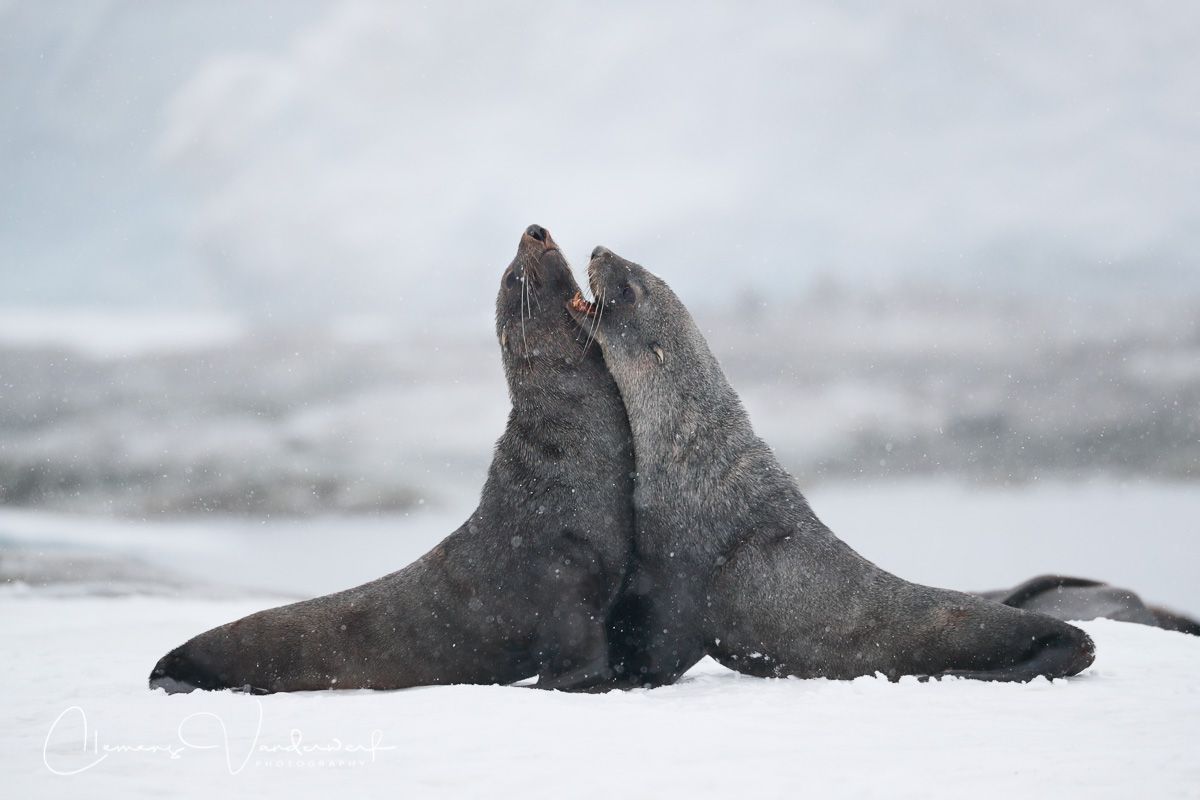
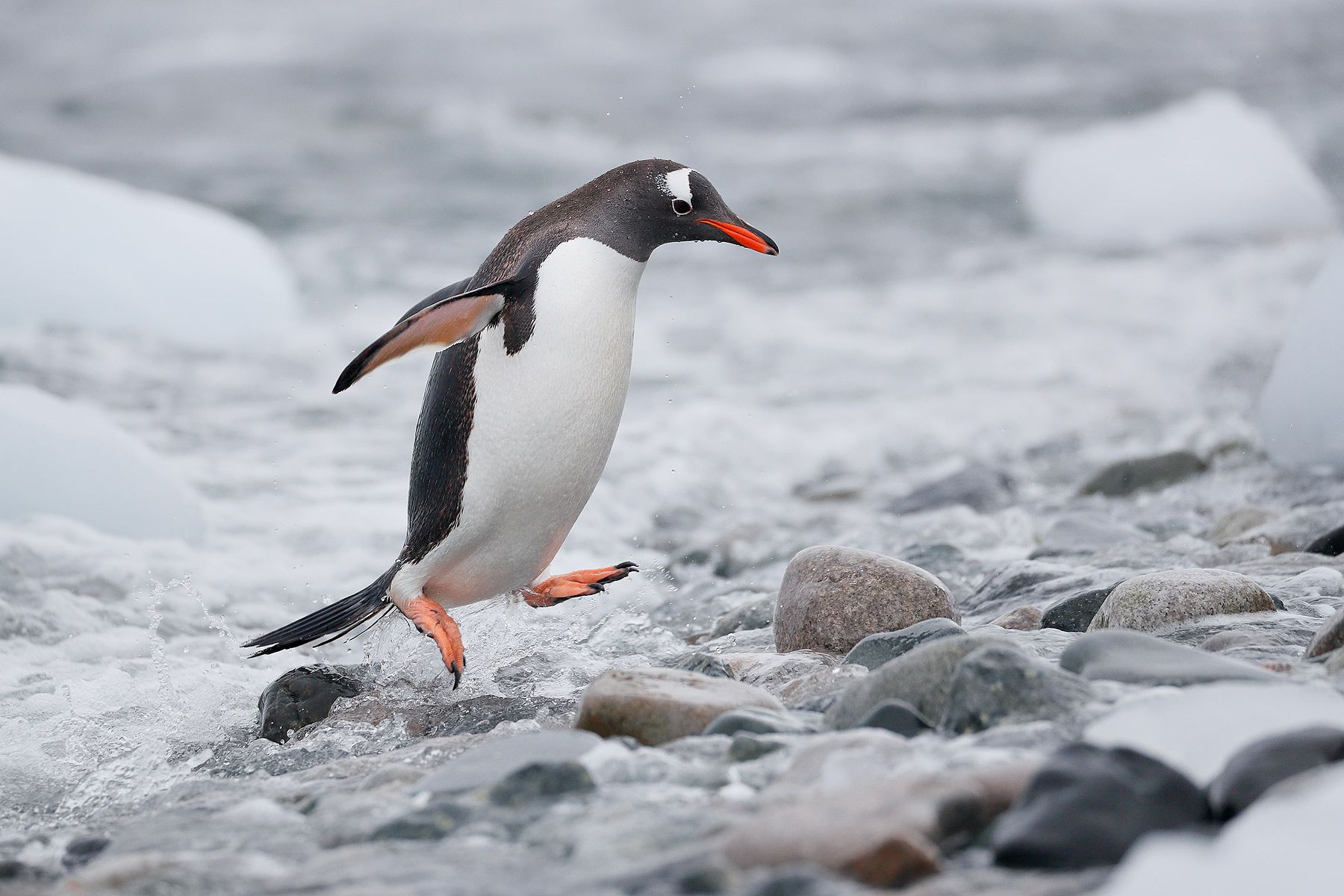
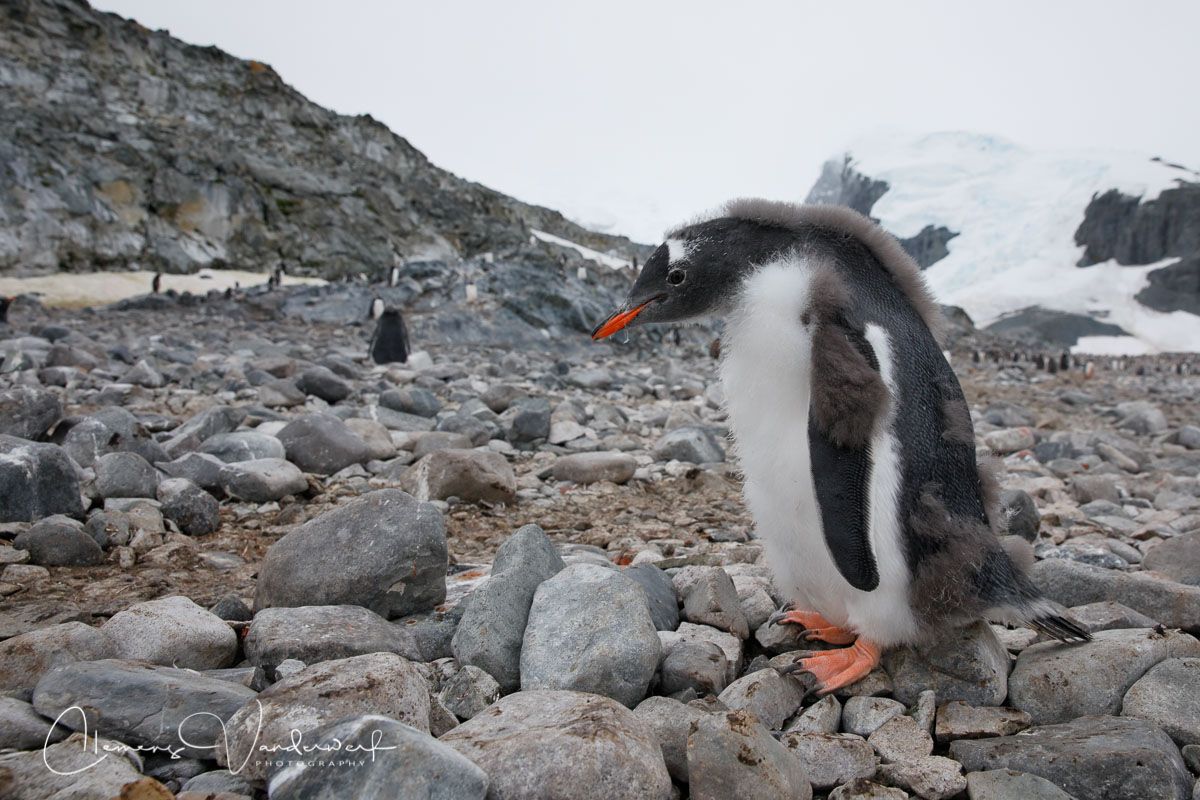
Experience the Drake Shake during my voyage on board Plancius:
"Although it was a challenging voyage from a photography perspective due to the fact that the time ashore was limited and no specific attention was given to the needs of photographers on board. It is clear that photography is a large and important part of every voyage that visits the Southern Ocean, even if it is not a specific photography trip. Everyone has a camera (iPhone, Point-and-Shoot or DSLR), and has an interest in taking better images."
Everyone is also interested to see high quality images from other photographers, just to learn or get inspired. The photography content provided by the expedition staff on this voyage was mediocre at best and the images presented lacked quality and inspiration. Although I understand that photography was not the main focus, I belief it is a missed opportunity not to improve the customer experience on this one aspect that all guests share. Photographs are the main memory and visual reminder of the voyage for the guests. A better job could have been done to enhance these memories, and to have customers come back for more!
Would I go on a similar voyage again? Absolutely! But, if I had the chance to create my own experience with maximum time ashore, a small group of like-minded people, my own choice of where to go and a time table that I would be able to influence, I would do that in a heartbeat! You think that would be nearly impossible, and exorbitantly expensive, right? Maybe not. Stay tuned, and you might be surprised!

